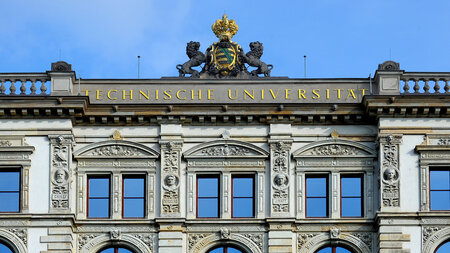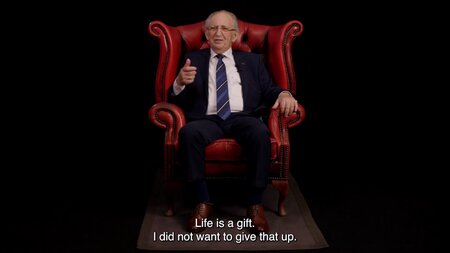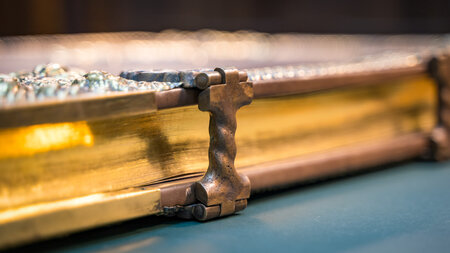This project pursues the aim of designing a sensor/actuator functional area that is integrated into a two-dimensional metal structure through directly applying piezo fibers. The focal point is the design of the electromechanical interaction for the geometrical and functional design of a piezo-metal composite having the potential to form the ambient areas of the construction material plastically in a subsequent process. Accordingly, the project can clearly be distinguished from the previous method aiming for an operation and function of the piezo fibers by developing universal functional modules that are independent from the later application and usage. This led to an extremely limited compatibility of the modules with the process chains of the component production. The subsequent intricate application caused by using adhesives with very long hardening times, hampers the implementation of the functional modules in high-volume applications. A further critical point can be seen in the high operating voltage of the present high-power modules, e.g. 500 to +1500V that is indispensable in macro-fiber-composite-modules (MFC) with d33-operation modes (field setup in fiber longitudinal direction). This project approaches to the design of functional areas in which single piezo fibers or fine-structured piezo fiber composites are already directly embedded in the metal construction material. In contrast to interdigital electrodes with field setup in fiber longitudinal direction, the structure of the electrical controlling field for the fibers is to realize significant lower controlling voltage through their cross-section so that an improved actuatory capacity in today’s most powerful separate fiber modules can be reached. From the piezo fibers inserted, the functionalized area is immediately produced in a semifinished product out of the construction material that is to be processed in future process chains of sheet metal forming. If only the area of the construction material is taken into consideration, a metal-based functional module with optimized output parameters is obtained that is adapted to its optimum to the material technical and structure mechanical constraints of sheet metal semifinished products. In the first application term, the construction and design of this functional module are focused. Based on the own works in advance, the preferred variant illustrated in the figure below is pursued:

The fibers sawed out from piezo plates and integrated into the cavities are switched analogously in d33-direction over a collector to a batch actuator. Thereby, the electrical field is set up by the cross-sectioned fibers. With their edge length of ca. 200 µm, low controlling stresses can be reached. The total extension results from adding the extension of the cross-section of the single fibers, which is different from the previous fiber modules in direction of the longitudinal axis.

Through chamfers at the front of the microcavities to the collectors (see figure above), the electrodes get accessible to the piezo fiber and can therefore be connected to the collector.
For this basic configuration subproject C1 is trying to develop an integrated FEM-model by means of which on the one hand, limiting values for an optimum parameter cluster of geometry, mechanical and electrical material parameters and electrical control are to be inferred. On the other hand, the effects of real technological implementation will be investigated and evaluated.
Structuring this integrated FEM-model requires the work on the following sub topics:
- Designing an FEM-model of the module field with parameterizable geometry
- Analysis of the electrical field distribution in fiber and its ambient metal construction material on the basis of an optimized basic geometry
- Analysis of the mechanical interaction at the contact surface
- Experimental verification of the module model
- Development of a method on localization and loads as a consequence of external loads driving the module on the components of the unit cell piezo fibers-insulation layer-construction material
- Integration of high external stresses into the module design through plastic deformation of ambient metal areas
The FEM-model is compiled by the commercial program package ANSYS. The electromechanical field couplings are taken into account. Linear material laws for piezoceramics, elastic/plastic material descriptions of metal and insulation underlie. The contact edge conditions on the interface are also paid attention to. Arranging the integration of piezo fibers into two-dimensional metal-semifinished products results from considering technological developments on microstructuring and packaging. Consequently, it is closely connected to the subprojects A2, A3, A4 and C3. Moreover, the requirements of the process chains of the subsequent processing considered in the subprojects B1 and B2 incorporate especially through forming. There is also a strong interaction with subproject C2 concerning the transformer design. For comparing and evaluating the occurring defects caused by ANSYS having integrated the linear formulations for the mechanical field coupling into piezoceramics, additional calculations are done using the program CFS++ owned by the Chair of Sensorics of Erlangen University. Simultaneously, a continuity of the data flow within the simulation works of the entire transregio can be guaranteed. In concordance with the development of optimized piezo fibers in subproject A1, variations of the selected module structure enabling an integration of the geometrical non-exact fibers are studied in the second application term. A conceivable variant for this are multiple-layer microstructured fiber modules that are joined with the two-dimensional semifinished product by a negative image of this microstructure in the metal basic material.






